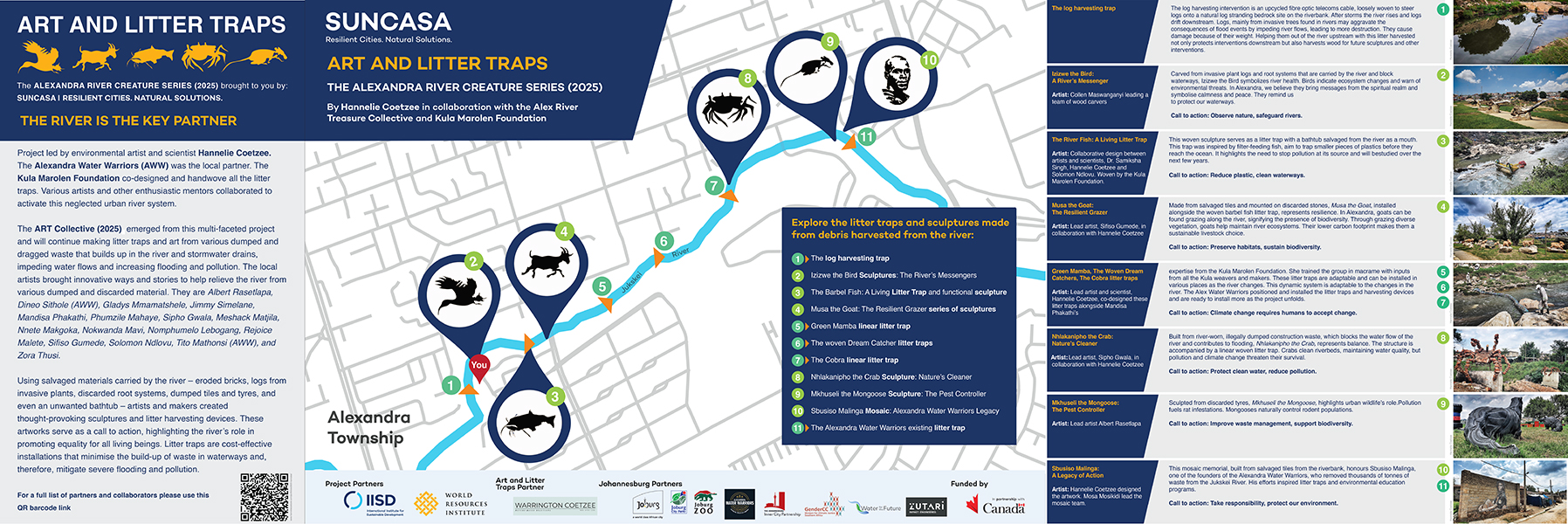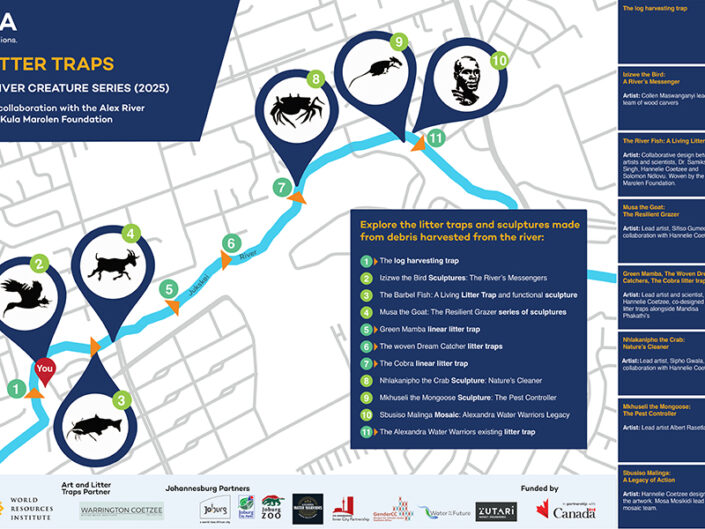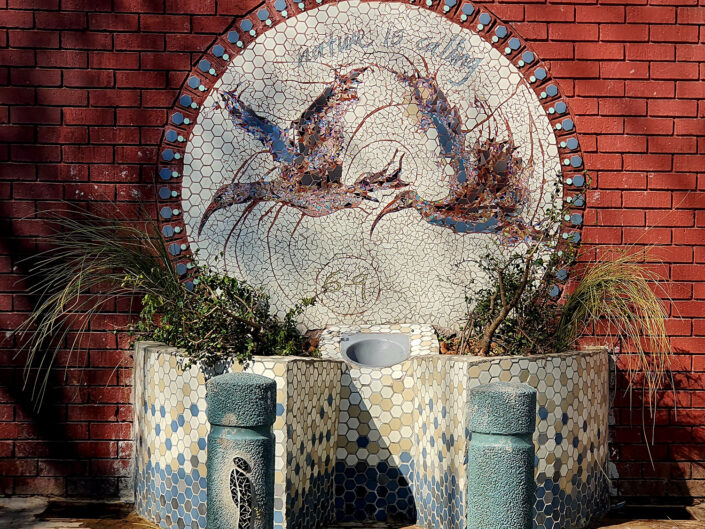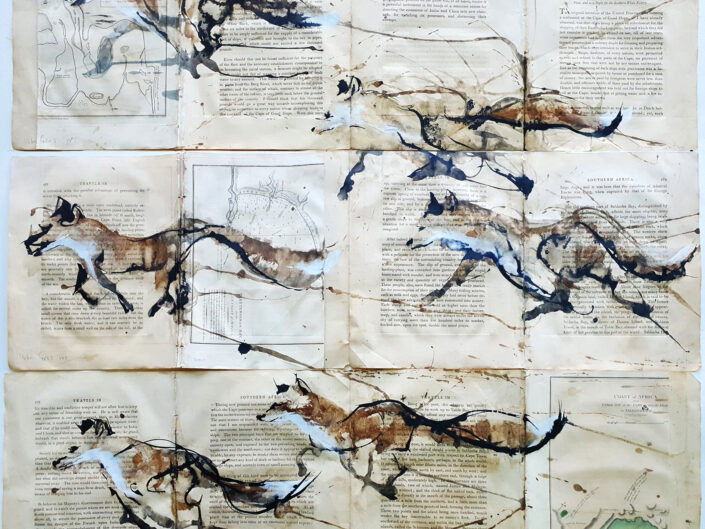
Turning Trash into Treasures along the Jukskei River
Alexandra, Johannesburg — Along the once-neglected banks of the Jukskei River, a powerful new collaboration is finding innovative nature-based solutions. Through the SUNCASA Litter Traps and Art Project, the Alexandra community is transforming solid waste into river cleaning installations and public art to reduce flooding, improve biodiversity, and ignite climate action from the ground up.
This initiative is being implemented under the SUNCASA (Scaling Urban Nature-based Solutions for Climate Adaptation in Sub-Saharan Africa) project . The 3-year initiative is aimed at revitalising the Upper Jukskei River catchment through nature-based solutions that address flooding, erosion, manage urban heat, improve water security, and enhance biodiversity protection—ultimately increasing climate resilience for over a million people.
“It struck me that we could turn the rather unsightly litter traps into vibrant community spaces by activating them through public art installations,” says David van Niekerk, CEO of the Johannesburg Inner City Partnership (JICP). “They could then be used not only for river cleaning, but also to involve the local community in the activation process, as well as places where locals and tourists could learn about the river and nature-based approaches.”
The Jukskei River Community Litter Trap and Art Launch took place on 16 April 2025 in Alexandra Township. The programme included a visit to the Kula Marolen Foundation for an introduction to Alexandra’s weaving community, followed by guided site visits along the Jukskei River led by artist Hannelie Coetzee, working with The Art Collective, and Alexandra Water Warriors. The event concluded with reflections from key partners including the City of Johannesburg and Global Affairs Canada, and a networking lunch, showcasing collaborative efforts to revitalise the river.
Led by a creative team including local artists from Alexandra, ecologists, and the Alexandra Water Warriors, supported by JICP and the World Resources Institute (WRI), the Litter Traps and Art initiative is both visionary and deeply local. Discarded items like tyres, fibre-optic cables, bricks eroded by the river, and even bathtubs have been repurposed into vandal-resistant, environmentally conscious litter traps and sculptures — structures that physically filter debris from the river while telling symbolic stories of regeneration.
“We’ve turned the detritus of urban life into guardians of the river,” says lead artist and environmental activist Hannelie Warrington-Coetzee. “Each trap speaks to what has been discarded — physically and socially — and transforms it into a symbol of care. Art is not an add-on here; it is central to ecological restoration.”
The SUNCASA initiative is funded by Global Affairs Canada and delivered by the International Institute for Sustainable Development (IISD) and (WRI). Implemented across three sub-Saharan cities: Johannesburg, Kigali (Rwanda), and Dire Dawa (Ethiopia), the project aims to enhance climate resilience, gender equality, social inclusion and biodiversity protection through community-driven nature-based solutions. In Johannesburg, SUNCASA’s NbS will benefit over 1 million people.
In Johannesburg, the programme’s alignment with the City’s Integrated Development Plan, strengthens efforts to combat key environmental challenges in vulnerable areas like Alexandra — where informal settlements face regular flooding, rising heat, and pollution.
Key interventions include:
- Removal of alien invasive species and replanting of indigenous vegetation
- Solid waste removal and recycling
- Urban greening and tree planting to reduce urban heat
- Community education and local capacity building
- Public art using creative reuse of waste for environmental awareness
The engagement of local partners like Water for the Future, Alexandra Water Warriors and Gender CC exemplifies the value of locally rooted partnerships in climate resilience work. Their involvement and leadership ensure that gender-responsive and socially inclusive nature-based solutions are not only implemented but also embraced and maintained by the community in the long run.
The educational component of the project translates the science and creativity into accessible resources for learners. Community-focused lesson plans cover topics such as biodiversity, including the mongoose’s role in managing rat populations, and goats being a more sustainable livestock choice, offering an integrated understanding of ecosystem health.
Hundreds of community members have already engaged with the dynamic litter harvesting devices and the process of waste transformation. The next phase involves a co-designed plan for the riparian zone of the Jukskei River Park, activating participation from thousands more who live along the riverbanks.
FOR MEDIA ENQUIRIES:
Bridget van Oerle
083 263 6991
About SUNCASA
Led by the International Institute for Sustainable Development and the World Resources Institute with funding from Global Affairs Canada, the SUNCASA project works with local governments, civil society and community associations to foster climate adaptation, economic growth and sustainability. By delivering nature-based solutions that restore watersheds, riparian corridors and urban green spaces, SUNCASA’s work is a direct response to climate risks.
In Johannesburg, the project aims to restore more than 450 hectares and plant 46,000 trees in strategic sites. Local partners include the City of Johannesburg, the Johannesburg Inner City Partnership, Johannesburg City Parks and Zoo, Zutari, Gender CC, Water for the Future, and the Alexandra Water Warriors.
About Hannelie Warrington-Coetzee
Hannelie Warrington-Coetzee is a Johannesburg-based visual artist and honorary research fellow at the Global Change Institute, University of the Witwatersrand. With a practice rooted in public space and ecological restoration, Coetzee’s work spans from ephemeral to permanent installations and often involves direct community participation. Her art frequently incorporates reclaimed industrial waste to form unexpected yet powerful connections between place, people, and ecology.
She holds a Master of Science (cum laude) from Wits, and her dissertation Eco-art for a Transformative Climate Culture explores the role of art in building public engagement with climate change.
Participants
Albert Rasetlapa
Alina Majeka
Collen Mashangwanyi
Dineo Sithole
Florence Campbell
Gladys Mmamatshele
James Breytenbach
Jimmy Simelane
Karien Hanekom
Kenny Shivambu
Khaya Dladla
Mandisa Phakathi
Mbali Dladla
Mbali Sibiya
Meshack Matjila
Mia George
Morne Kleynhans
Mosa Mosikidi
Naledi Moteka
Nnete Makgoka
Nokwanda Mavi
Nompumelelo Lebogang
Nozipho Sibaya-Zulu
Ntombikayise Dumzela
Paul Mackenzie
Paul Nemagubini
Phumzile Mahaye
Rejoice Malete
Samiksha Singh
Sifiso Gumede
Sifiso Molotshwa
Simba Mgeda
Sipho Gwala
Solomon Ndlovu
Stuart Dunsmore
Thato Marolen
Tito Mathonsi
Vusi Sibanda
Zandile Morule
Zola Thusi




